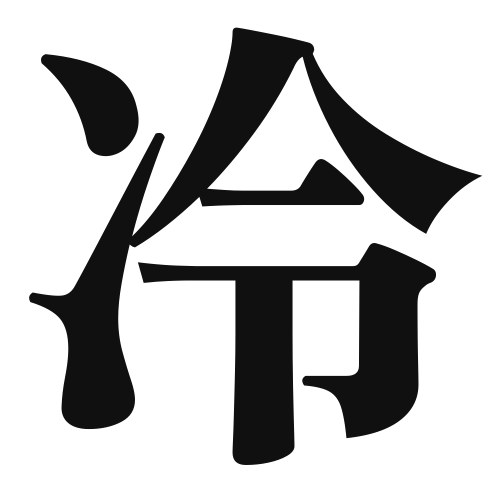1. Overview of Meaning
The kanji “冷” (rei) means “cold” or “cool.” It is used to describe low temperatures, both in terms of weather and objects, as well as to express a sense of emotional detachment or indifference.
2. Formation and Radical
The kanji “冷” is a phonetic compound (形声文字) that combines the radical for “ice” (氷) on the left side, which indicates a connection to coldness, and the phonetic component “ling” (零) on the right side, which contributes to its pronunciation.
The radical for “ice” (氷) is significant as it directly relates to the concept of coldness.
3. Examples of Usage
Common words and phrases that include “冷” are:
- 冷たい (つめたい, tsumetai) – cold (to the touch)
- 冷蔵庫 (れいぞうこ, reizouko) – refrigerator
- 冷静 (れいせい, reisei) – calm, cool-headed
Example sentences in daily conversation:
- この水はとても冷たいです。 (このみずはとてもつめたいです。) – This water is very cold.
- 彼は冷静に状況を判断した。 (かれはれいせいにじょうきょうをはんだんした。) – He assessed the situation calmly.
4. Synonyms and Antonyms
Similar kanji with related meanings include:
- 寒 (さむい, samui) – cold (referring to weather or temperature, often used for a more general sense of coldness)
Antonyms include:
- 熱 (ねつ, netsu) – hot, heat
5. Cultural and Historical Background
The kanji “冷” is often associated with Japanese culture, particularly in the context of seasonal changes and traditional practices such as enjoying cold foods in summer.
Proverbs and idiomatic expressions include:
- 冷や水をかける (ひやみずをかける) – to pour cold water on something, meaning to dampen enthusiasm or excitement.
